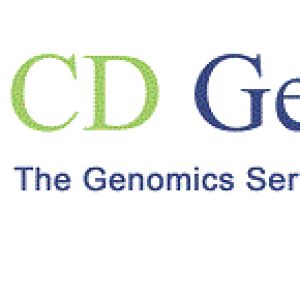The Role of Exosome RNA in CancerPosted by kiko on November 29th, 2023 The Relationship Between Exosomes and Cancer Exosomes are nanoscale vesicles derived from intracellular lysosomes that shuttle a variety of biomolecules, such as nucleic acids, proteins, lipids, amino acids and metabolites, and play a key role in regulating intercellular communication. Exosomes can be secreted by almost all types of cells, including immune cells, blood cells, neuronal cells, epithelial cells, and cancer cells. Exosomes contain various types of RNA molecules, including miRNA, mRNA, and even long non-coding RNA (lncRNA), which are significantly involved in the regulatory role of exosomes. Tumor cell-derived exosomes have important roles in reshaping the tumor microenvironment, promoting angiogenesis, metastasis and invasion, as well as regulating immune escape of tumor cells. So, what is tumor microenvironment? The tumor microenvironment is the sum of cellular, molecular and physical environments surrounding the tumor, including tumor cells, immune cells, blood vessels, stroma, etc. The tumor microenvironment is closely related to tumor growth, metastasis, and drug resistance. In the tumor microenvironment, exosomes carrying tumor cell information can smoothly transmit them to other cells and directly participate in the regulation of tumor growth and metastasis. For example, exosomes play an important function in mediating intercellular information transfer between tumor cells and TAM in the tumor microenvironment, which may provide new targets for anti-tumor therapy. And tumor-associated macrophages (TAM) are among the most abundant immune cells in the tumor microenvironment. How to Explore the Dynamics of Exosomal RNA in the Tumor Microenvironment Exploring the dynamics of exosome RNA in the tumor microenvironment requires consideration of the following aspects. Composition and types of exosome RNA The composition and types of RNA of exosomes from different sources change. For exploring the dynamic changes of exosome RNA in the tumor microenvironment, the composition and trends of different sources and types of exosomal RNA need to be taken into account. For example, exosomal RNA released by tumor cells may contain some miRNAs related to tumorigenesis and progression, while exosomal RNA released by immune cells may contain some miRNAs related to immune regulation. Secretion and uptake of exosome RNA The secretion and uptake of exosomal RNA are important factors affecting the dynamics of exosomal RNA in the tumor microenvironment. The impact of different pathways on the uptake efficiency and biological function of exosomal RNA needs to be taken into account when designing study protocols. Tumor cells and other cells can release exosomes through different pathways, such as through exocytosis, exothermic agglutination and release, and vesicular structures on the cell surface. In turn, cells that take up exosomal RNA can also do so through different pathways, such as endocytosis, fusion, receptor-mediated, etc. Interaction of exosomal RNA with other molecules in the tumor microenvironment The interaction of exosomal RNA with other molecules in the tumor microenvironment is also a key factor in exploring the dynamic changes of exosome RNA in the tumor microenvironment. Exosomal RNA can influence the function of other cells and molecules in the tumor microenvironment by regulating target gene expression, thus affecting tumor growth, metastasis, and immune escape. Therefore, for exploring the dynamic changes of exosome RNA in the tumor microenvironment, the interaction relationship between exosomal RNA and other molecules in the tumor microenvironment, as well as the biological significance of the interaction and the mechanism of action need to be taken into account. Quantification and Analysis Methods of Exosomal RNA The quantification and analysis methods of exosomal RNA are also key factors in exploring the dynamic changes of exosomal RNA in the tumor microenvironment. Currently, commonly used methods for quantifying and analyzing exosomal RNA include qPCR, sequencing, microarray, etc. All these methods have their advantages, disadvantages and applicability, and it is necessary to choose the appropriate method for quantification and analysis according to the specific research questions and experimental design. The more commonly used method is RNA sequencing, which can analyze the sequence and expression level of all RNA molecules simultaneously, including exosomal RNA. RNA sequencing can comprehensively analyze the composition and species of exosomal RNA. The advantage of RNA sequencing is that all RNA molecules can be detected, not limited to known sequences, and thus new exosomal RNA species and unknown biological functions. Like it? Share it!More by this author |


